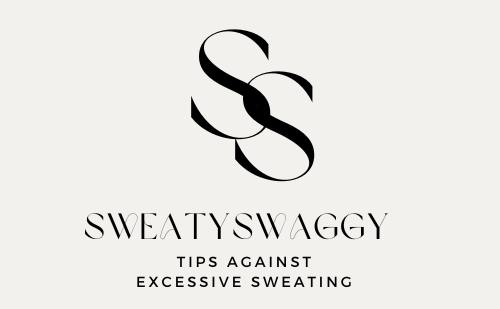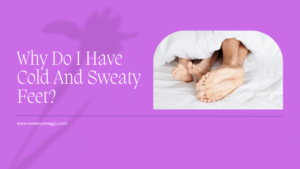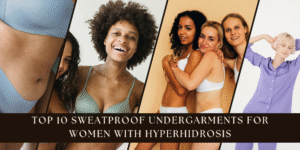For all of us that have hyperhidrosis choosing the right fabric for any activity is crucial. If you are planning to do any sport the first thing to do is find the perfect wear. Much depends on the type of sport and the location and there are several things to which you should pay attention. The fabric of the sportswear is one of those things on the top of the list.
If you haven’t heard of moisture-wicking and moisture-absorbing fabrics it is time to learn about the differences. Your choice will make a great impact on feeling better while you do yoga or lift weights in the gym. It is also important if you are in an open space so that you feel comfortable even while sweating.
What Are Moisture Wicking Fabrics?
Moisture-wicking fabrics are specially engineered materials designed to move moisture away from the body to the fabric’s surface, where it can evaporate more easily.
Moisture-wicking fabrics are a better choice if you run in the park, or anywhere in an open space. The evaporation occurs once the droplets of sweat come into contact with the oxygen.

These moisture-wicking fabrics are mostly polyester and merino wool. Of course, they aren’t just a great choice for those who do some sports but for everyone including people with hyperhidrosis. You can find many pieces of sportswear like leggings and T-shirts made with them. However, such clothes may be perfect for people who have hyperhidrosis, for simple daily activities like walking or grocery shopping.
What Are Moisture-Absorbing Fabrics?
Are you looking for sportswear made of fabric that would hold the sweat in it, not make other layers wet? If so, leggings, T-shirts, blouses, etc. made of moisture-absorbing fabrics are the best choice. The structure of these fabrics doesn’t allow sweat to transmit to the nearest layer of clothes.
After some time of doing sport, you can change only the sweated T-shirt and you’ll be dry for some time again. Cotton is the best moisture-absorbing fabric, so choosing it for your favorite physical activity is best. This choice is also great for those who sweat more regularly, and who have the time and place to change clothes appropriately.
What’s the Difference between moisture absorbing and moisture wicking?
Although at first it might seem that these two fabrics are pretty much the same, they function differently. Both will contribute to staying dry and will also stop perspiration stains on the material. However, three main differences will make you question which is best for you to choose.
- Moisture-absorbing fabrics will do their job more quickly and sweat patches will be less visible. On the other hand, moisture-wicking fabrics absorb slower, as part of the collected sweat evaporates at the same time.
- Moisture-wicking fabrics allow you to feel your body cooler, as airflow helps during evaporation. This is why these fabrics are great for warmer days when you don’t wear more layers of clothes.
- Moisture-wicking fabrics also allow greater comfortability as they feel lighter. This is because they don’t absorb too much sweat at once.
How moisture-wicking fabrics work?
Before I dive into this topic and explain how I understand it, I wanted to mention that moisture-wicking clothing is really a good choice for heavy sweating. I have a big collection of moisture-wicking clothes but yoga pants are my favorite as I can go to the gym without being soaked in sweat.
So long story short, the fibers of any clothing materials fall into 2 main categories: hydrophilic and hydrophobic.
- Hydrophilic – fibers absorb water
- Hydrophobic – fibers repel water
This is how moisture-wicking materials came into the radar. A combination of both sounds perfect, right?
Wool for example is a good example of a hydrophilic and hydrophobic mixture as it has the capacity to absorb sweat, and then push it away.
So these 2 parameters plus a little bit of chemistry and physics 🙂 and that’s how the moisture-wicking fabrics were born.
Generally speaking, they can absorb sweat and move it forward into the space or a tube which will easily evaporate later.
They are a blend of different fabrics that are absorbing (cotton), hydrophobic(wool), breathable, and comfortable for everyday usage.
If you want to learn more check here.
What Are Breathable Fabrics?
More types of breathable fabrics can be rated by their moisture vapor transmission rate (MVTR). This is of great importance for the fashion industry so that they can use the right material for certain pieces of clothing.
Its name, ‘Breathable Fabrics’ itself speaks about its function. Pieces of clothes made of such fabrics allow the skin to breathe, by not letting the sweat stick on the surface. If the sweat remains on the skin it can close the pores and cause discomfort or even irritation.
Conclusion
You can always choose right if you read the labels carefully after informing yourself what fabric is the better choice. It all depends on your needs, location, or season. For instance, wicking fabrics are great for warm weather. Moisture-absorbing may be the first layer of your winter outfit so you can change them once they become wet.
FAQs
1. What are the best brands for moisture-wicking clothing?
There are more great brands for moisture-wicking clothing. Some of the widely known are Smartwool, Black Diamond, Houdini, Columbia, Patagonia, and more.
2. Moisture wicking or moisture absorbing? Which is better for workwear?
Moisture-wicking is definitely better as a workwear especially if you have hyperhidrosis.
Some of the best moisture-wicking workwear brands are Trailside Supply Co., Dickies, Clothe Co., Under Armour, and Columbia Silver Ridge. Of course, there are more names to come across, but these are among the best.
3. Does moisture-wicking keep you dry?
Moisture-wicking fabrics keep you dry as that is one of their primary functions. They collect the sweat and allow it to evaporate easily so nothing stays on the surface of your skin. It is how you can feel comfortable and stop any kind of skin irritation.
4. Does moisture-wicking material work?
Moisture-wicking materials do their job of absorbing and drying fast due to the structure of the fabric itself. Of course, it is essential to pick the right piece of clothes for the season and the type of sport, or surroundings you need.
5. Is cotton moisture-wicking?
No, cotton is hydrophilic which means that it keeps the sweat on it for a long time and it doesn’t allow easy evaporation. It’s the most famous moisture-absorbing fabric.
6. What are the best moisture-wicking underwear brands?
Brands like Uniqlo Airism, Boody, Ejis, and Body Glide are among the most popular brands for moisture-wicking underwear. I personally prefer bamboo underwear from the Boody brand.




